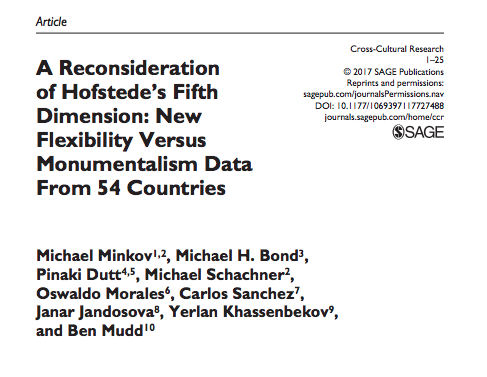STEREOTYPED BEHAVIOR CAUSED BY LTO AT WORK
Long term orientation describes the virtue regardless of truth. It is reflected in thrift and perseverance versus respect for tradition, fulfilling social obligations, and protecting one’s ‘face’.
Low long term orientation
- Positive statements
- Personal steadiness/ stability
- Ordering relationship by liking/ purpose
- Effortlessly changes to follow (short term) opportunity
- Easily excited by new thoughts/ ways of living
High long term orientation
- Normative statements
- Ordering relationships by status
- Thrift, saving
- Shame culture, face protecting
- Respect for tradition
- Reciprocation of greetings, favors, gifts
Abstract:
Hofstede’s “long-term orientation” (LTO) may be one of the most important dimensions of national culture, as it highlights differences on a continuum from East Asia to Africa and Latin America, strongly associated with differences in educational achievement. However, LTO’s structure lacks theoretical coherence. We show that a statistically similar, and theoretically more focused and coherent, dimension of national culture, called “flexibility versus monumentalism,” or vice versa, can be extracted from national differences in self-enhancement and self-stability or self-consistency, as well as a willingness to help people. Using data from nearly 53,000 respondents recruited probabilistically from 54 countries, we provide a new national flexibility-versus-monumentalism index that measures key cultural differences on the world’s East–West geographic axis and predicts educational achievement better than LTO or any other known dimension of national culture.

